Scientific papers 2022 - Part B






Authors:
Morgan Levenez, Kate Lambrechts, Simona Mrakic-Sposta,
Alessandra Vezzoli, Peter Germonpré, Hadrien Pique,
Fabio Virgili, Gerardo Bosco, Pierre Lafère, and Costantino
Balestra.
Impaired flow mediated dilation (FMD), an index of
vascular stress, is known after SCUBA diving. This is related
to a dysfunction of nitric oxide (NO) availability and a
disturbance of the redox status, possibly induced by
hyperoxic/hyperbaric gas breathing. SCUBA diving is
usually performed with a mask only covering “half-face”
(HF) and therefore forcing oral breathing. Nasal NO
production is involved in vascular homeostasis and, as a
consequence, can significantly reduce NO possibly
promoting vascular dysfunction. More recently, the
utilization of a “full-face” (FF) mask, allowing nasal
breathing, became more frequent, but no reports are
available describing their effects on vascular functions
compared to HF masks.
In this study, the authors assessed and compared the
effects of a standard shallow dive (20 min at 10 m)
wearing either F or an HF mask on different markers of
vascular function (FMD), oxidative stress (ROS, 8-iso-
PGF2a), and NO availability and metabolism (NO2, NOx
and 3-NT and iNOS expression).


Authors:
Torkjel Tveita, Ingrid Eftedal, Sanjoy Deb.
This paper discusses fast human adaptation to a new
equilibrium such as ambient temperature and pressure,
high altitude, water immersion, and immediate access to
natural resources like food, water, shelter, etc.
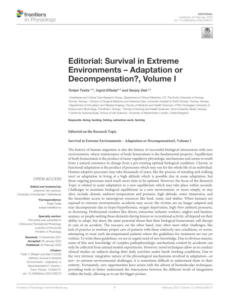

Authors:
Miguel Alvarez Villela, Sophia A. Dunworth, Bryan D. Kraft,
Nicole P. Harlan, Michael J. Natoli, Hagir B. Suliman, and
Richard E. Moon.
Hyperbaric Oxygen (HBO 2 ) has been proposed as a pre-
conditioning method to enhance exercise performance.
Inadequate methodologies have limited most prior studies
testing this effect. Its potential efficacy and mechanism of
action remain unknown. The authors hypothesized that
HBO 2 could enhance aerobic capacity by inducing
mitochondrial biogenesis via redox signaling in skeletal
muscle. HBO2 was administered in combination with
high-intensity interval training HIIT), a potent redox
stimulus known to induce mitochondrial biogenesis.
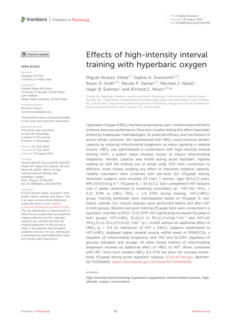

Authors:
Alain Boussuges, Jeremy Bourenne, Farid Eloufir, Julien
Fromonot, Giovanna Mottola, Jean Jacques Risso, Nicolas
Vallee, Fabienne Bregeon, and Régis Guieu.
Climbers and aviators are exposed to severe hypoxia at
high altitudes, whereas divers are exposed to hyperoxia at
depth. This study aimed to report changes in the
adenosinergic system induced by exposure to extreme
oxygen partial pressures.


Authors: Jean-Pierre Imbert, Salih-Murat Egi, and
Costantino Balestra
Decompression sickness (DCS) was the main concern of
saturation diving safety, but procedures have evolved over
the last 50 years, and DCS has become a rare event. New
needs have evolved to evaluate the diving and
decompression stress to improve the flexibility of the
operations (minimum interval between dives, optimal
oxygen levels, etc.). This paper discusses the authors'
monitoring of this stress during actual saturation
operations.


Authors:
Jean Morin, Nicolas Vallée, Pierre-Louis Dufresne, Sarah
Rives, Henri Lehot, Lucille Daubresse, Romain Roffi, Arnaud
Druelle, Pierre-Julien Cungi, and Jean-Eric Blatteau
This study analyzes 200 medical records of military divers
suspected of COVID-19 contamination between April
2020 and February 2021. The data collected included
physical examination, ECG, blood biochemistry, chest CT
scan, and spirometry
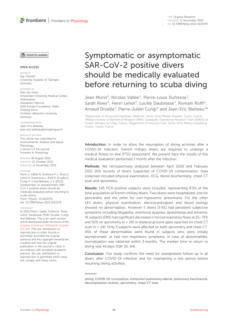

Authors:
Sung Kyun Kim, Sung Jun Han, Seok Jin Hong, and Seok
Min Hong
Ear canal skin is directly attached to bone or cartilage, and
is also connected to the eardrum. Acute otitis externa is
cellulitis of the ear canal skin and subdermal tissue
associated with acute inflammation and variable edema.
The authors characterized the microbiome of the normal
ear canal and ear canal with otitis externa.
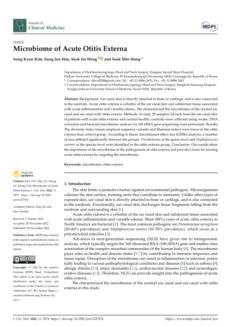

Authors:D. Limanan & F. Ferdinal
This document is to be linked to the undesirable effects of
oxygen described in our handbooks:
Reactive Oxygen Species (ROS) can damage all
macromolecules, such as Deoxyribonucleic acid (DNA),
Ribonucleic acid (RNA), proteins, carbohydrates, and
lipids. That can contribute to the pathogenesis of various
diseases, including cancer, diabetes, neurodegenerative,
CVD, and aging (Oxidative Damage )
Hypoxia is defined as a deficiency in either the delivery or
the utilization of oxygen at the tissue level, which can lead
to changes in the body's function, metabolism, and even
structure, and could be used for drug development and
disease treatment.
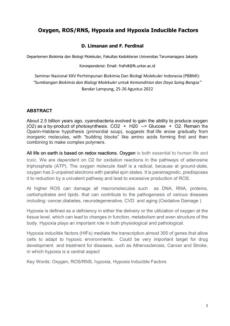

Authors: JS Kelly & JP Delaney
Cold-water swimming has recently attracted academic
interest as a lifestyle therapy for improving mood and
reducing depression (Kelly & Bird, 2022; Massey et al 2020;
Van Tulleken et al, 2018). However, sudden immersion in
cold-water is not without significant risk to health,
including increased blood pressure, increased risk of
abnormal cardiac events, and death! (Tipton et al, 2017),
these are considered to result from the cold shock
response.
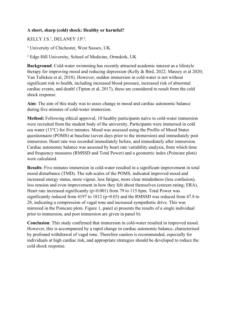

Authors:
Jean-Pierre Imbert, Jean-Yves Massimelli, Ajit Kulkarni,
Lyubisa Matity, & Philip Bryson
Saturation diving is a specialised method of intervention in
offshore commercial diving. Emergencies may require the
crew to be evacuated from the diving support vessel.
Because saturation divers generally need several days to
reach surface, the emergency evacuation of divers is
based on dedicated hyperbaric rescue systems. There are
still potential situations for which these systems cannot be
used or deployed, and where an emergency
decompression provides an alternative solution.
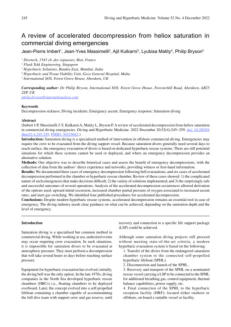

Authors:
Emmanuel Gouin, Costantino Balestra, Jeremy Orsat,
Emmanuel Dugrenot, and Erwan L’Her
The use of closed-circuit rebreathers (CCRs) in recreational
diving is gaining interest. However, data regarding its
physiological effects are still scarce. Immersion, cold water,
hyperoxia, exercise or the equipment itself could challenge
the cardiopulmonary system. The purpose of this study
was to examine the impact of CCR diving on lung function
and autonomous cardiac activity after a series of CCR dives
in cold water.

Authors:
Daniel Popa, Craig Kutz, Morgan Carlile, Kaighley Brett,
Esteban A Moya, Frank Powell, Peter Witucki, Richard
Sadler, Charlotte Sadler
Faults or errors during use of closed-circuit rebreathers
(CCRs) can cause hypoxia. Military aviators face a similar
risk of hypoxia and undergo awareness training to
determine their ‘hypoxia signature’, a personalised,
reproducible set of symptoms. The authors aimed to
establish a hypoxia signature among divers, and to
investigate their ability to detect hypoxia and self-rescue
while cognitively overloaded.
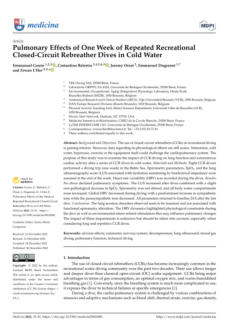
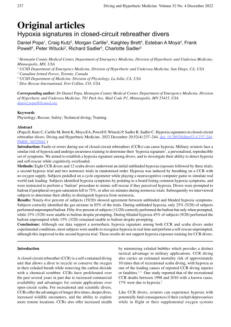

Authors:
Michele Salvagno, Giacomo Coppalini, Fabio Silvio
Taccone, Giacomo Strapazzon, Simona Mrakic-Sposta,
Monica Rocco, Maher Khalife, and Costantino Balestra
Hypoxia, even at non-lethal levels, is one of the most
stressful events for all aerobic organisms as it significantly
affects a wide spectrum of physiological functions and
energy production. Aerobic organisms activate countless
molecular responses directed to respond at cellular, tissue,
organ, and whole-body levels to cope with oxygen
shortage allowing survival, including enhanced neo-
angiogenesis and systemic oxygen delivery.
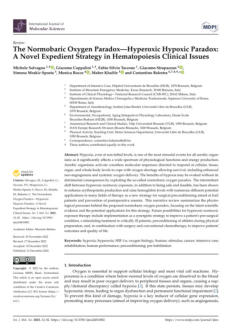

Authors: Jan Risberg, & Pieter-Jan van Ooij
Depending on pO2 and exposure time hyperoxic
breathing gas may cause injury in many organs including
the lungs. Pulmonary oxygen toxicity (POT) may be
asymptomatic, but will initially present as a tracheo-
bronchitis in symptomatic subjects. A number of objective
measurements of POT have been investigated, but the
decrement in vital capacity (VC) has remained the most
accepted outcome measure.
The unit pulmonary toxic dose (UPTD). based on the pO2
and exposure time, has been established as the most
common exposure index for POT in diving.
Nevertheless, the K-index suggested by Arieli performs
better and allows estimation of recovery.
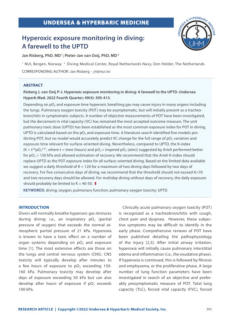

Authors: HanWei Zhang, ZhiRen Tsai, Victor C. Kok,
HsiaoChing Peng, YauHung Chen, Jeffrey J. P.
Tsai, & Chung Y. Hsu
We publish this report as many divers, ROV pilots, and
supporting people are confronted with hydrocarbons.
Major ambient air pollutants include particulate matter and
volatile organic compounds, including total hydrocarbons
(THCs). Primary non-methane hydrocarbons (NMHCs)
originate from vehicle emissions. The association between
air pollution and urinary bladder cancer (UBC) is
debatable. The authors investigated whether long term
exposure to ambient hydrocarbons increases UBC risk
among people aged ≥ 20 years in Taiwan.


Authors:
Josep M. Casadesús, Javier NietoMoragas,
Maria T. Serrando, Pere BoadasVaello, Ana Carrera,
Fernando Aguirre, R. Shane Tubbs, Francisco Reina
This study evaluates the usefulness of a histomorphometric
digital analysis in detecting air space over-distension due to
pulmonary barotrauma. It was performed on lung
parenchyma specimens of 12 divers: six had died due to
arterial gas embolism following pulmonary barotrauma
(mean age at death of 54 years, range of 41–61 years),
and six had drowned in saltwater without a diagnosis of
pulmonary barotrauma (mean age at death of 54 years,
range of 41–66 years) (positive controls).
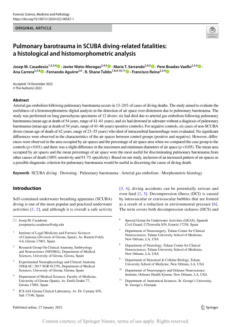

Authors: Vincenzo Zanon, Silvia Magri, Giulia Bonera, and
Enrico Camporesi.
Gas embolism is a potentially fatal occurrence in which
bubbles are introduced into the arterial/venous
circulation.
Multi-focal ischemia could be a life-threatening scenario
occurring after diving-related activities, pulmonary
barotrauma, or even an iatrogenic procedure capable of
causing an accidental introduction of gas into the
vasculature. The reported case concerns the good
outcome of one of these rare occurrences thanks to a
prompt diagnosis and proper management of the
ongoing gaseous lesion.
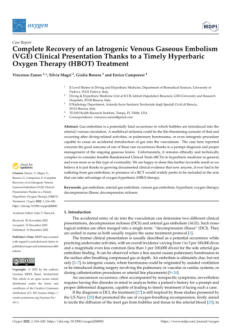

Authors:
José González-Alonso, José A. L. Calbet, Ricardo Mora-
Rodríguez, Pascale Kippelen
The authors evaluated the impact of combined versus
isolated dehydration and hyperthermia and the effects of
sympathoadrenal discharge on ventilation and pulmonary
gas exchange during prolonged intense exercise.
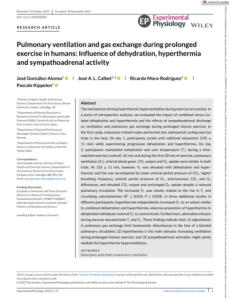

Authors: Connor TA Brenna, Shawn Khan, Rita Katznelson,
Richard Brull
This scoping review seeks to characterize rehabilitative
outcomes when hyperbaric oxygen therapy is applied as
an adjunct therapy in the treatment of perioperative
peripheral nerve injury.


Authors: Beibei Dong, Yuanyuan Bai, Qi Jia , Lin Su, Xinyue
Zhang, Shiquan Wang , Zongping Fang
Stroke is a major health concern and a leading cause of
mortality and morbidity. The authors and other groups
have documented that hyperbaric oxygen preconditioning
could significantly alleviate neuronal damage in ischemia-
reperfusion models through various mechanisms.
However, they found that some of the subjects did not
benefit from preconditioning with hyperbaric oxygen. The
preconditioning phenomenon is similar to vaccination, in
which the endogenous survival system is activated to fight
against further injuries.


Authors:
Ilaria Tarozzi, Lorenzo Franceschetti, Gianfranco Simonini,
Silvia Raddi, Davide Machado, Valentina Bugelli
The present study shows how the cooperation between a
forensic underwater expert and a forensic pathologist
played a crucial role in interpreting radiological findings,
guiding the autopsy and confirming/denying
circumstantial data emerging from the
investigations.
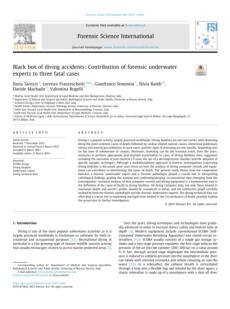

Authors: Secil Ozkan Ata, Nazim Ata, Rifat Ugurlutan
The aim of this study was to evaluate the flexural strength
values of five luting cements that are commonly used in
dental restorations after exposed to hyperbaric pressure.


Authors:
Clément Leveque, Simona Mrakic-Sposta, Pierre Lafère,
Alessandra Vezzoli, Peter Germonpré, Alexandre Beer,
Stéphane Mievis, Fabio Virgili, Kate Lambrechts, , Sigrid
Theunissen, François Guerrero, and Costantino Balestra
The effects of oxygen over time and at different partial
pressures remain poorly understood. In this study, the
metabolic responses of normobaric oxygen intake for 1 h
to mild (30%) and high (100%) inspired fractions were
investigated.
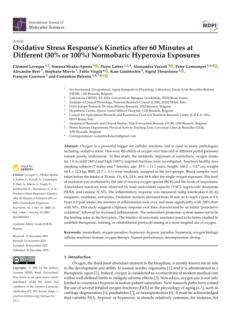

Authors:
Awadhesh K. Arya, Costantino Balestra, Veena M.
Bhopale, Laura J. Tuominen, Anne Räisänen-Sokolowski,
Emmanuel Dugrenot, Erwan L’Her, Abid R. Bhat, and
Stephen R. Thom
Blood-borne extracellular vesicles and inflammatory
mediators were evaluated in divers using a closed circuit
rebreathing apparatus and custom-mixed gases to
diminish some diving risks.
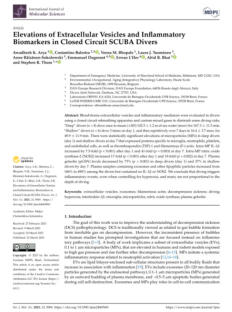

Authors:
Clara GaioLima, João Castedo, Mafalda Cruz, Margarida
Candeias, Óscar Camacho
Cancer remains one of the leading causes of death
worldwide, with patients requiring radiotherapy. Patients’
survival rate has increased significantly, with an inevitable
increase in the number of patients experiencing side
effects from cancer therapy. One such effect is late
radiation injuries in which hyperbaric oxygen therapy
appears as complementary treatment. With this work the
authors intend to divulge the results of applying
hyperbaric oxygen therapy among patients presenting
radiation lesions in our Hyperbaric Medicine Unit.


Authors:
Munire K. Ozgok Kangal, Heather M. Murphy-Lavoie
HPNS is one of the significant limitations of deep diving.
This document reviews the evaluation and management
of HPNS and explains the role of the interprofessional team
in managing patients with this condition.
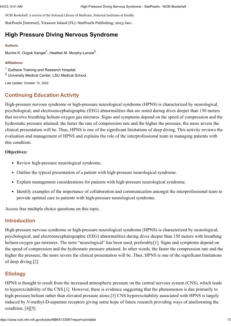

Published by the International Bioethics Study Group
Animal experimentation is widely used around the world
for the identification of the root causes of various diseases
in humans and animals and for exploring treatment
options. Among the several animal species, rats, mice and
purpose-bred birds comprise almost 90% of the animals
that are used for research purpose. However, growing
awareness of the sentience of animals and their
experience of pain and suffering has led to strong
opposition to animal research among many scientists and
the general public. In addition, the usefulness of
extrapolating animal data to humans has been questioned.
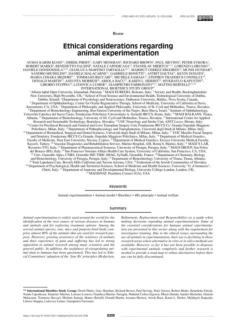

Authors:
Yu Bai, Shengsong Chen, Zeyu Zhang, Xu Huang, Jingen
Xia, Min Li, Qingyuan Zhan
Although acute respiratory distress syndrome (ARDS)
patients are provided a lung rest strategy during
extracorporeal membrane oxygenation (ECMO)
treatment, the exact conditions of barotrauma is unclear.
Therefore, The authors analyzed the epidemiology and risk
factors for barotrauma in ARDS patients using ECMO in a
single, large ECMO center in China.
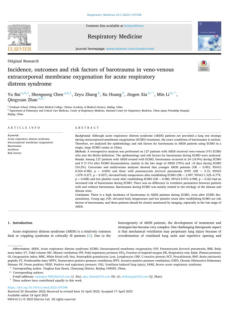

Authors: Nadiawati Abdul Razak, Victor Feizal Knight
Naval scuba-diving is part of military training and follows
the standard military diving manuals and protocols.
This review discusses the pathophysiology and
presentation of barotrauma, its associated hazards, and
the medical management of the divers, including the roles
of compression chambers for treatment and post-mortem
purposes.
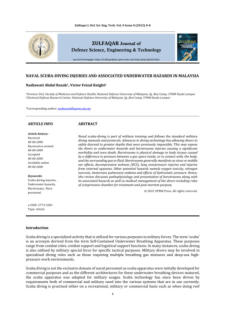

Authors: Karen R. Kelly, Laura J. Arrington, Jake R.
Bernards, and Andrew E. Jensen
Cold water exposure poses a unique physiological
challenge to the human body. Normally, water
submersion increases activation of parasympathetic tone
to induce bradycardia in order to compensate for
hemodynamic shifts and reduce oxygen consumption by
peripheral tissues. However, elevated stress, such as that
which may occur due to prolonged cold exposure, may
shift the sympatho-vagal balance towards sympathetic
activation, which may potentially negate the dive reflex
and impact thermoregulation.
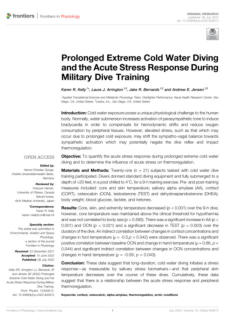

Authors: Pierre Lafère, Peter Germonpré, and Costantino
Balestra
Experience from treating diving accidents indicates that a
large proportion of divers suffering from pulmonary
barotrauma (PBT) or arterial gas embolism (AGE) were
engaged in training dives, specifically emergency free
ascent (EFA). The authors attempted to verify this
relationship and calculate, if possible, the risk associated
with normal recreational dives, training dives, and EFA
training dives.
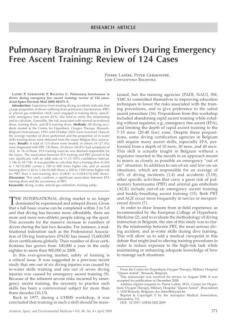

Authors: James P. Fisher, Johanna Roche, Rachel Turner,
Anna Walzl, Giulia Roveri, Hannes Gatterer, and
Christoph Siebenmann
The authors sought to determine the effects of prolonged
moderate hypobaric hypoxia (HH) on cardiac baroreflex
sensitivity (cBRS) in young women and whether these
effects are a consequence of the reduced arterial oxygen
(O2) tension and/or increased pulmonary ventilation in
HH. They hypothesized that HH would reduce cBRS, and
that this effect would be counteracted by the acute
restoration of the inspiratory partial pressure of O2 and/or
voluntary attenuation of pulmonary ventilation.

Authors: Stanisław Skrzynski, Grzegorz Grzeczka
This article is part of a series of articles on the research and
deployment of saturation diving technology in Poland.
This part discusses Polish specificities and achievements
against the background of economic and historical
contexts. It describes the creation of the foundation for
saturation diving in the times of economic hardship in the
country.


Authors:
Johanna Roche, Peter Rasmussen, Hannes Gatterer, Giulia
Roveri, Rachel Turner, Gerrit van Hall, Marc Maillard, Anna
Walzl, Michael Kob, Giacomo Strapazzon, Jens Peter
Goetze, Simon Thomas Schafer, Tobias Kammerer, Elie
Nader, Philippe Connes, Melanie Robert, Thomas Mueller,
Eric Feraille, and Christoph Siebenmann
The authors previously reported that hypobaric hypoxia
(HH) reduces plasma volume (PV) in men by decreasing
the total circulating plasma protein (TCPP). In this study,
the researchers investigated whether this applies to
women and whether an in flammatory response and/or
endothelial glycocalyx could facilitate the TCCP reduction.
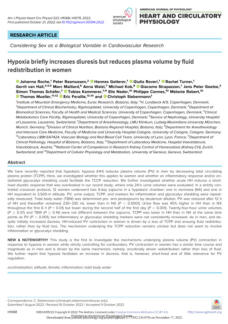

Authors:
Takayuki Tanaka, Shinichiro Ito, Takahiro Ikeda, Shun
Yamaguchi, Shunsuke Kawakami, Tomoo Kitajima, Yusuke
Inoue, Kengo Kanetaka, Toru Iwata, Susumu Eguchi
The authors report a case of transverse colon perforation
caused by a compressed-air gun in a 20-year-old male.
He used a compressed air machine to dust after work,
and a coworker inserted compressed air transanally as a
joke. Although he returned home once, he consulted a
hospital due to worsening abdominal pain. Radiography
and computed tomography (CT) revealed a massive
amount of free air.
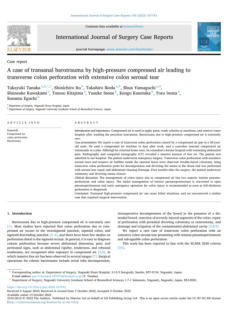

Authors: Yun Mukmin Akbar, Ani Melani Maskoen, Endah
Mardiati, Ganesha Wandaw, Arlette Suzy
Setiawan
This review article aims to describe animal studies on the
potential effects of hyperbaric oxygen therapy in
orthodontic treatment. It was conducted using a
systematic literature review method, which involved
searching PubMed and Google Scholar for publications
relevant to the research topics. The search was filtered to
include only research on orthodontic treatment and
hyperbaric oxygen therapy and was published in any year.
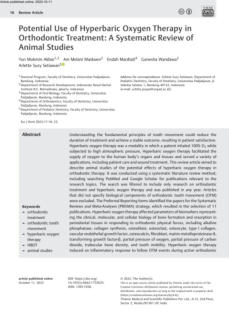

Authors:
Hannes Gatterer, Johanna Roche, Rachel Turner,
Giovanni Vinetti, Giulia Roveri, Maja Schlittler, Michael Kob,
Anna Walzl, Tomas Dal Cappello, Tadej Debevec, and
Christoph Siebenmann
Altitude exposure may suppress appetite and, hence,
provide a viable weight-loss strategy. While changes in
food intake and availability, as well as physical activity, may
contribute to altered appetite at altitude, herein, we aimed
to investigate the isolated effects of hypobaric hypoxia on
appetite regulation and sensation. Twelve healthy women
completed two 4-day sojourns in a hypobaric chamber,
one in normoxia,and one in hypobaric hypoxia equivalent
to 3,500 m altitude.
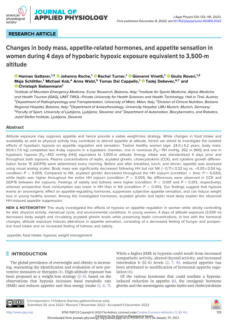

Authors:
Emmanuel Gouin, Costantino Balestra, Jeremy Orsat,
Emmanuel Dugrenot, and Erwan L’Her
The use of closed-circuit rebreathers (CCRs) in recreational
diving is gaining interest. However, data regarding its
physiological effects is still scarce. Immersion, cold water,
hyperoxia, exercise, or the equipment itself could
challenge the cardiopulmonary system. The purpose of
this study was to examine the impact of CCR diving on
lung function and autonomous cardiac activity after a
series of CCR dives in cold water..
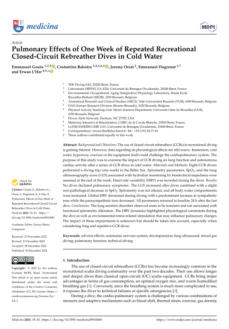

Authors: Agni Febrina Pargaputri, Dwi Andriani,
Mardiyanto Riski Hartono, Kharinna Widowati
he liver is an organ that plays a role in metabolism and the
detoxification of chemical substances. The excessive use of
immunosuppressive drugs not only becomes a
predisposing factor for oral candidiasis but also can cause
damage and impairs liver function. Hyperbaric oxygen
treatment is known to preserve hepatocytes and prevent
liver damage. This study aimed to investigate the effect of
hyperbaric oxygen treatment on liver hepatocyte damage
in oral candidiasis immunosuppressed rats.
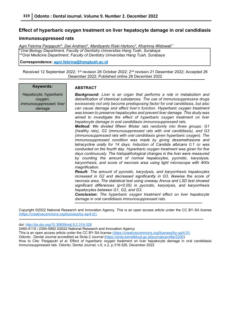

Click on the octopus
to return to the top
of the page



Authors: Seher Kurtul, Nejdiye Güngördü
This paper describes the case of an artisanal diving
fisherman who has worked underwater for many years
and is now affected by degenerative changes in the
acromioclavicular joint and osteonecrosis starting from the
subcortical area of the humeral head and extending to the
proximal shaft of the humerus.
The authors conclude that dysbaric osteonecrosis is one of
the most common long-term pathologies in professional
divers who do not apply safe decompression procedures
and use unsafe diving practices.
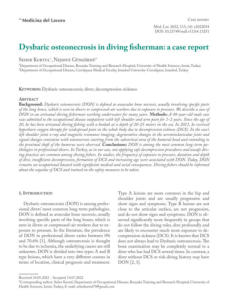

Authors: Xiao-chen Bao, Tao Yang, Yi-qun Fang, Yong-jun
Sun, Nan Wang
This study measured the lung function of divers after a
single heliox dive to 80, 100 or 120 metres of
seawater.During the dive, the divers breathed heliox and
air, and then switched to oxygen in a hyperbaric chamber
during surface decompression. Pulmonary function was
measured twice before the dive, 30 minutes after the dive,
and 24 hours after the dive. The authors concluded that a
single deep heliox dive causes a transient decrease in
forced vital capacity and maximal expiratory flow, which
can be recovered 24 hours after surfacing.


Authors: Stian Lande Wekre, Halvor Dagssøn Landsverk,
Jacky Lautridou, Astrid Hjelde, Jean Pierre Imbert,
Costantino Balestra, and Ingrid Efteda
Saturation divers are at risk of dehydration due to excessive
fluid loss caused by hyperbaric pressure, water immersion,
and hot water suits. Dehydration is associated with
reduced mental and physical performance, resulting in an
increased risk of work-related accidents. In this study, the
authors evaluated the hydration status of divers during a
saturation diving campaign at a working depth of 74 m
using bioelectrical impedance analysis (BIA) and urine
specific gravity (USG). The results showed that the divers
maintained their hydration levels.
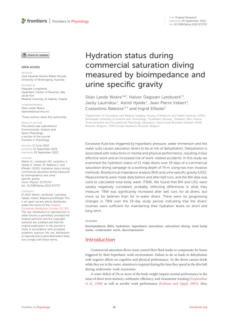

Authors: Giuliana Spadaro, Ilaria Tiddi, Simon Columbus,
Shuxian Jin, Annette ten Teije, CoDa Team, and
Daniel Balliet
The authors developed a Cooperation Databank, which is
a research platform that allows users to retrieve studies
that test the relationship between variables and
cooperation, visualize study results, and perform meta-
analyses, metaregressions, estimates of publication bias,
and statistical power analyses for future studies based on
the available data set. They used visualization tools to
leverage the dataset, enabling users to explore the
ontology of concepts in cooperative research and to plot a
citation network of the history of studies
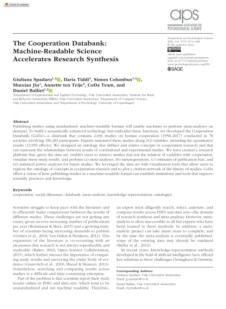

Authors: Oscar Plogmark, Carl Hjelte, Magnus Ekström,
Oskar Frånberg
The objective of this study was to analyze the agreement
between ultrasound bubble grades obtained from a
handheld self-positioning product, the O'Dive, and 2D
cardiac ultrasound after decompression. The conclusion is
that the O'Dive produced lower venous gas embolism
(VGE) grades compared to 2D cardiac ultrasound
imaging, resulting in a low level of agreement (fair to
poor) with weighted kappa* (weighted kappa* is a
statistical measure used to evaluate the level of agreement
between two raters or observers).
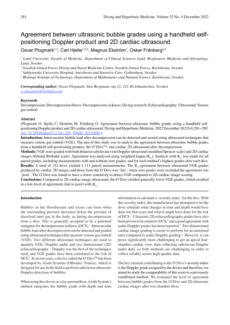

Authors: Muhammad Aulia Hikmah Romadoni, Dwi
Rahmat, Eka Arie Yuliyani
The aim of this study was to identify inner ear
decompression sickness (IEDCS) in divers. The authors
conclude that hyperbaric oxygen is the preferred therapy.
However, there may be residual deficits in balance and
hearing. In addition, they believe that diving
should be conducted according to protocol, and
information about decompression sickness should be
provided to at-risk groups through education, counseling,
or other media, in order to generate knowledge that is
relevant to taking precautions.
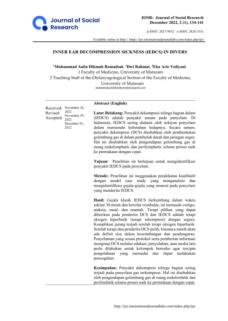




Authors: David J. Doolette & Simon J. Mitchell
This paper explains the findings of a study on Inner Ear
Decompression Sickness (IEDCS) in the context of
saturation diving. It evaluates whether IEDCS can be
attributed to the arterialization of venous bubbles and
their prolonged survival under deep saturation diving
conditions and discusses the mechanisms by which
venous bubbles might reach the inner ear, the conditions
that make the inner ear more vulnerable to injury, and the
implications of these findings for understanding IEDCS in
saturation diving.


Author: Joseph C. Maroon
This document presents a case report on the effects of
Hyperbaric Oxygen (HBO2) therapy on various health
parameters, including neurocognition, cardiopulmonary
function, neuroimaging, and biomarkers such as telomere
length and proteomics. The author shares the results of a
self-experiment involving 60 daily HBO2 therapy sessions
over three months, highlighting improvements in
cognitive function, cerebral perfusion, physical
performance, and biomarker levels. He suggests that
further studies with larger sample sizes and randomized
clinical trials are necessary to validate these findings.
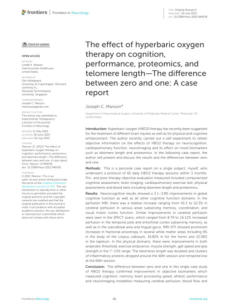

Authors: Yuwen Chen, Liang Wang, Wenjun You, Fei
Huang, Yingzi Jiang, Li Sun, Siye Wang, Su Liu
This study investigated the effectiveness and mechanisms
of hyperbaric oxygen (HBO) treatment in improving
dysfunction following traumatic brain injury (TBI). Its
authors evaluated the clinical curative effects of HBO
treatment by comparing various clinical and biochemical
parameters between a control group and an HBO-treated
group. They conclude that HBO treatment improved
consciousness, cognitive function, and overall prognosis in
TBI patients through several mechanisms, including
reducing hematoma volumes, enhancing EEG rhythms,
and modulating the expression of specific biomarkers.


Authors:
Kaitlin J. Mayne, Jennifer S. Lees, & William G. Herrington
This document intends to explain bioimpedance devices,
mainly focusing on their use in estimating body water and
fat. It highlights the differences between bioimpedance
spectroscopy (BIS) and bioimpedance analysis (BIA) and
emphasizes the capabilities of the Fresenius Body
Composition Monitor (BCM) in quantifying fluid overload
independently of body composition.
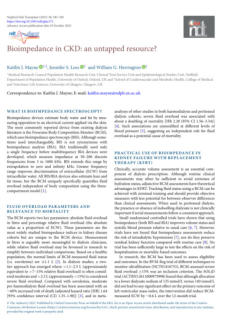

Authors: Gerrit A. Martens, Lars P. Folkow, Thorsten
Burmester, and Cornelia Geßner
This study presents scientific research findings on the
antioxidant defense mechanisms in the brains of marine
mammals, specifically harp seals and hooded seals. The
study focuses on the expression and activity of various
antioxidant genes and enzymes in different brain regions
and compares these findings to those in mice. It also
explores whether there is evidence of positive selection in
these antioxidant genes.
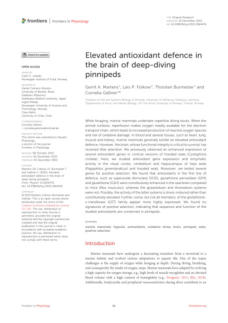

Authors:
Costantino Balestra, Awadhesh K. Arya, Clément Leveque,
Fabio Virgili, Peter Germonpré, Kate Lambrechts, Pierre
Lafère, and Stephen R. Thom
This study investigated the metabolic response of healthy
subjects to different levels of oxygen exposure, both
normobaric and hyperbaric to assess the effects of these
exposures on various cellular markers and microparticles,
with a focus on understanding the differential and
sometimes opposite responses observed. It suggests that
further research is needed to explore the potential
applications of these findings.
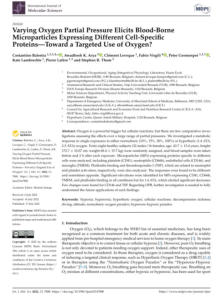

Authors: Rienk Rienks, Mattijn Buwalda, Jeroen Bucx, Emile
Dubois, Thijs Wingelaar, Rob van Hulst
This document discusses the importance of establishing
cardiovascular risk limits for divers, similar to those in
aviation, to prevent fatal diving accidents. It highlights the
lack of formal cardiovascular risk limits in diving and
suggests using a modified risk formula to calculate the risk
of harm, emphasizing the need for a cardiovascular risk
management system, particularly for older divers, to
reduce fatalities due to cardiovascular disease.


Authors: Sotiris Evgenidis, Thodoris Karapantsios
This paper describes a study that uses Computational Fluid
Dynamics (CFD) simulations to investigate pulsatile bubbly
flow in a column, which mimics the flow inside the
human vena cava during Decompression Sickness (DCS)
to understand the effects of specific parameters on bubbly
blood flow to aid in designing in-vitro experiments and in-
vivo trials. It outlines the methods used, including specific
software, highlighting the impact of bubble size on flow
characteristics and the potential improvements in
experimental design for bubble detection in DCS.
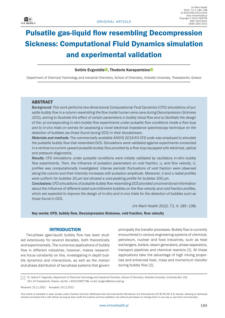
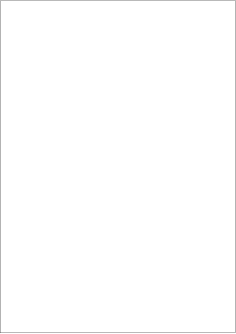


28 - The role of routine pulmonary imaging before hyperbaric
oxygen treatment

Authors: Connor TA Brenna, Shawn Khan, George
Djaiani, Jay C Buckey Jr., Rita Katznelson
Respiratory injury during hyperbaric oxygen treatment is
rare but can occur due to pressure changes, leading to
complications like pneumothoraces. Screening with chest
X-ray and Computed tomography scans has low
sensitivity and high false positive rates. Most pulmonary
abnormalities found in imaging are insignificant for
healthy individuals. Regular screening for low-risk patients
without symptoms is of limited value. This review presents
cases of pulmonary barotrauma and provides a checklist
for targeted imaging before treatment.
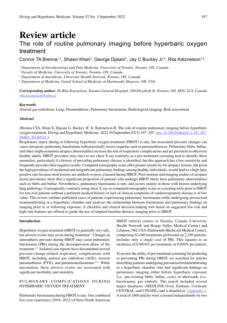
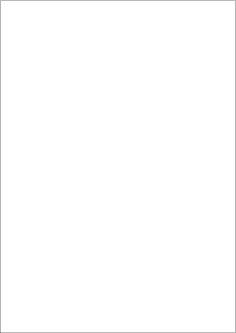


42 - Right cardiac chambers echo- bubble contrast in a patient with
decompression sickness: A case report and a literature review.
Authors: Allam Harfoush, Mohammad Ramadan,
Hanady Hamdallah
Decompression sickness (DCS) diagnosis relies on clinical
suspicion, without full confirmation methods.
Transthoracic echocardiography (TTE) detects
microbubbles in DCS cases. A case of a 54-year-old
fisherman with symptoms after diving showed TTE
findings, leading to hyperbaric oxygen therapy (HBOT).
TTE could assist in diagnosing and monitoring DCS
patients.
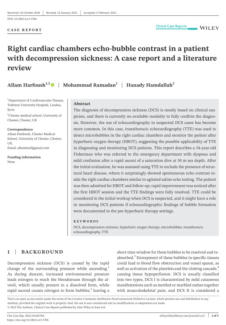
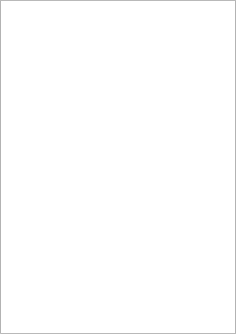


50 - Decompression Illness in a Scuba Diver With Significant
Esophageal Injury
Author: Eyal Avivi, Dana Zelnik Yovel, Daniel L. Cohen,
and Haim Shirin
This report covers an incident that happened to an
experienced diver who had a rapid ascent due to
mechanical failure, leading to severe esophageal injury
with ulcerations and, later, an esophageal stricture
requiring dilation. This is the first case report of such an
injury from decompression illness in a scuba diver.
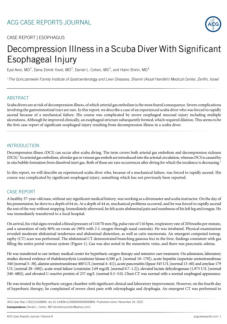



57 - Inner ear decompression syndrome (IEDCS)

Authors: Muhammad Aulia Hikmah Romadoni, Dwi
Rahmat, Eka Arie Yuliyani
Inner ear decompression sickness (IEDCS) is common
among divers in Indonesia, especially diver fishermen. It
occurs due to gas bubbles forming in blood vessels
during rapid ascents. This study aims to identify IEDCS
symptoms and treatments such as hyperbaric oxygen
therapy, which is preferred. Post-recovery, some may have
balance and hearing deficits. Education and precautions
are necessary for at-risk groups.




40 - Recent advances in the use of high flow nasal oxygen therapies

Authors: Kara D. Wyatt, Neha N. Goel, and Jessica S.
Whittle
High-flow nasal oxygen (HFNO) is a novel treatment for
respiratory failure that improves breathing and lung
function. While its physiological benefits are established,
its clinical effectiveness across different types of
respiratory failure (Type I, II, III, and IV) in both adults and
children, and in various settings like emergency
departments, ICUs, outpatient, and procedural areas, is
still being actively researched. This article reviews the
latest findings on HFNO's clinical efficacy in these diverse
contexts.

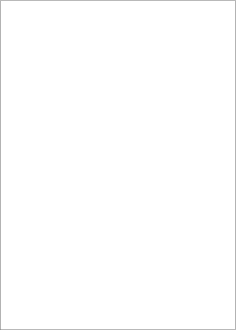

41 - Carbon dioxide tolerability and toxicity in rat and man: A
translational study
Authors: Rutger van der Schrier, Monique van Velzen,
Margot Roozekrans, Elise Sarton, Erik Olofsen,
Marieke Niesters, Chantal Smulders, and Albert
Dahan
This research provides crucial data on the physiological
changes in humans and fatalities in rats following acute
exposure to high CO2 levels. The findings suggest that
current governmental risk assessment levels for CO2
exposure (currently < 7.5%) should be reconsidered and
potentially raised to ≤ 9%, as humans showed tolerance
and functional coherence at this level for limited durations.












